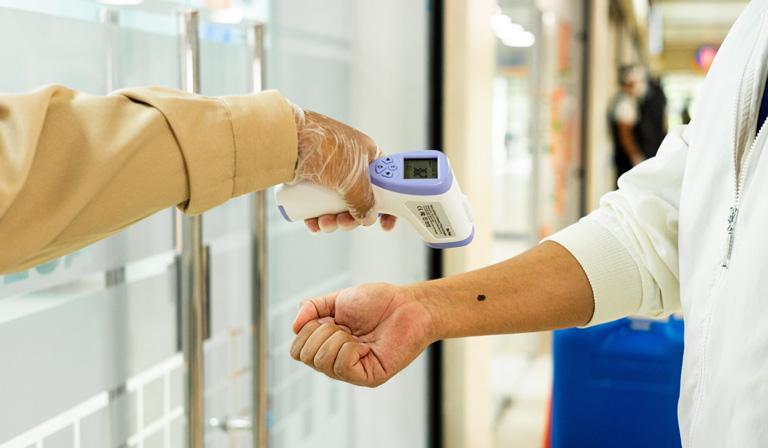

· By Trevor Horne
Noncontact Infrared Thermometer: Guidelines, Benefits, And More
The coronavirus is still a concern in many parts of the world. A lot of attention is being paid to the wearing of facemasks, but also to the temperature of individuals entering facilities of varying types. In some cases, you may have experienced this new criterion. As you walk into a building or an event, someone standing at the door scans your forehead with a device. This device is, more likely than not, a noncontact infrared thermometer. It tells that individual your temperature without having to actually touch you.
Granted, compared to digital, ear, or forehead thermometers, the noncontact infrared thermometer is less accurate. On the other hand, when it comes to the risk of cross-contamination, they pose the lowest risk. The presence of a fever can be detected by a noncontact infrared thermometer. As many of us know by now, one of the symptoms of COVID-19 is an elevated temperature. So that infected individuals don't infect others, taking a person's temperature is a good practice.
There are guidelines, limitations, and advantages to consider in any discussion of noncontact thermometers.
Guidelines
Strict instructions and manufacturer's guidelines are in place regarding noncontact thermometers. To ensure an accurate reading, these must be adhered to. Straight from the FDA, here are some guidelines that should be followed:
- Keep the thermometer’s sensor dry and clean and do not touch the sensing area.
- A noncontact infrared thermometer must be read at a specific distance and held perpendicular to the forehead when reading a person's temperature.
- In an area without direct sunlight and in a draft free space, noncontact infrared thermometers can be used. Additionally, prior to use, they should be placed in the space for an acceptable amount of time. This allows for environmental adjustment.
Limitations
Noncontact infrared thermometers are an incredible invention, but they do have their limitations. Some of these are as follows:
- Readings can be impacted by positioning and distance. The potential for the spread of disease is elevated the closer people are to each other; so distance – as desirable as it is to lower risk – may have a negative effect on accuracy.
- According to recommendations by the FDA, these devices should be used when relative humidity is below 85% at temperatures which are between 60.8 and 104°F. Those are some pretty stringent requirements!
- Also according to the FDA, measurement of temperatures can be affected by where and how these noncontact thermometers are used. As an example, readings could be inaccurate if they are used in an environment that is too cold or too hot.
Benefits
The FDA weighed in on this one as well and, in their opinion, noncontact infrared thermometers offer the following benefits:
- Due to the ease with which multiple screenings can be quickly conducted, they are considered extremely efficient.
- They are easy to disinfect, clean, and to use.
- The chances of the disease being spread between people are reduced through the use of these devices.
Stay Safer with Credible PPE
Are you looking for Level I or Level III surgical facemasks? Look no further than at ProNorth Medical Corporation. We also carry other forms of PPE, such as respirators and isolation gowns. But wait! There's more. You can shop for other medical, veterinary, and dental products on our site.
Don't leave our website until you check out our current clearance items, too. After all, it never hurts to save a little money!
